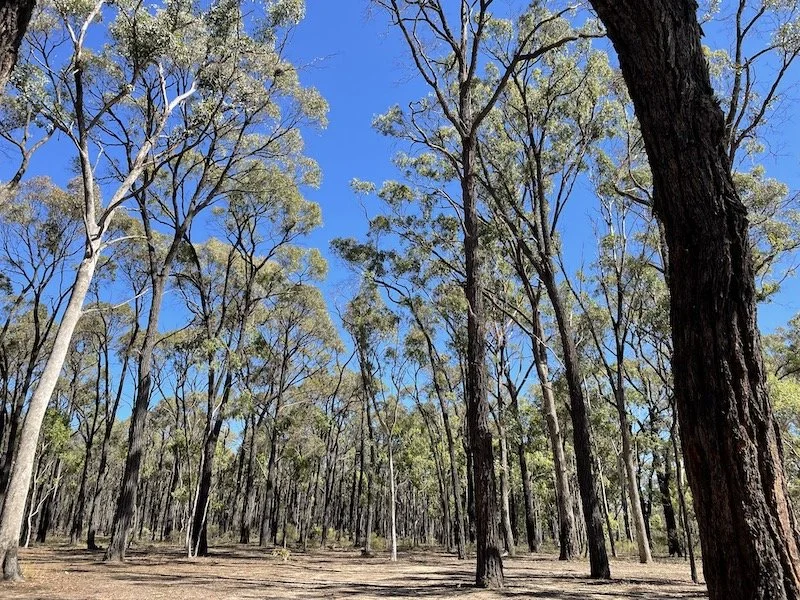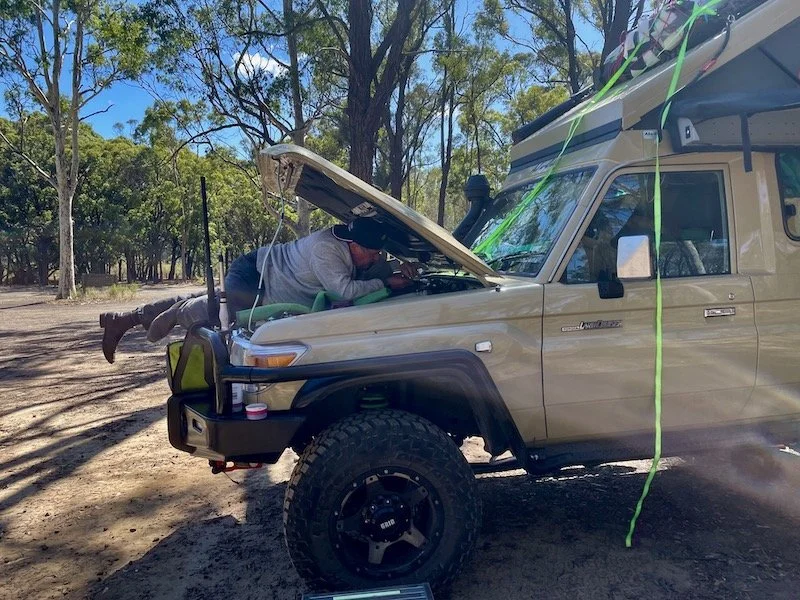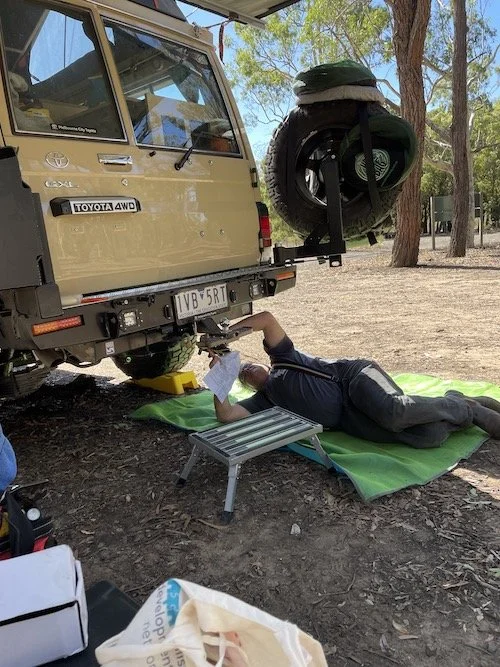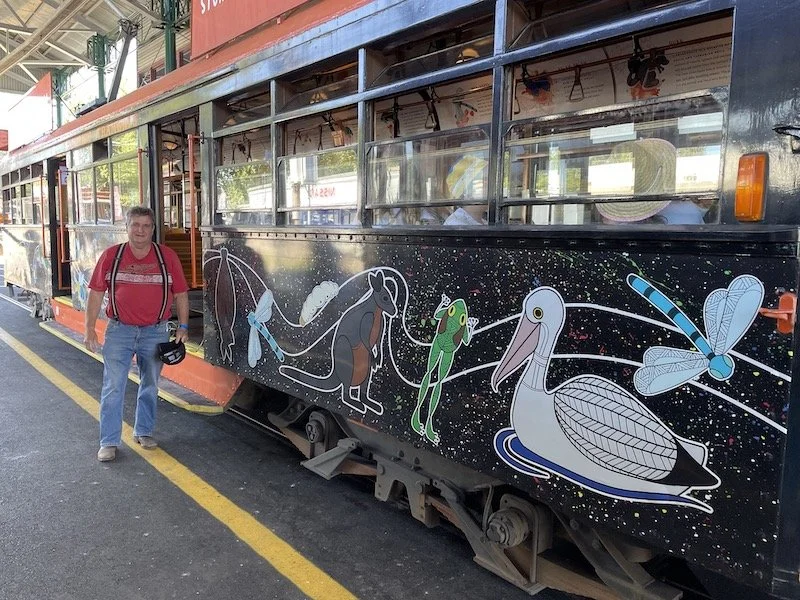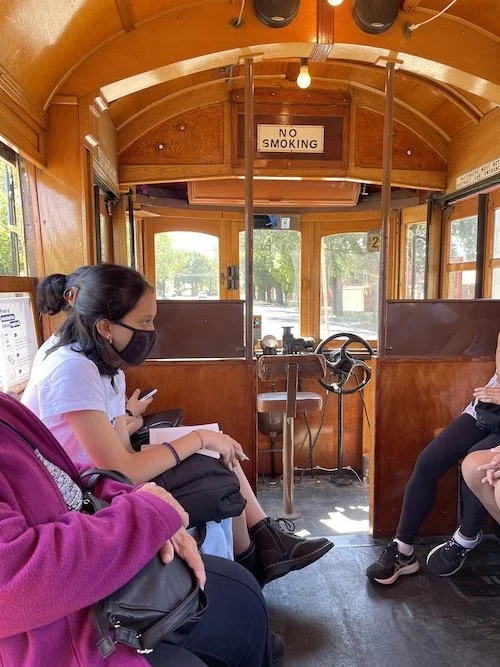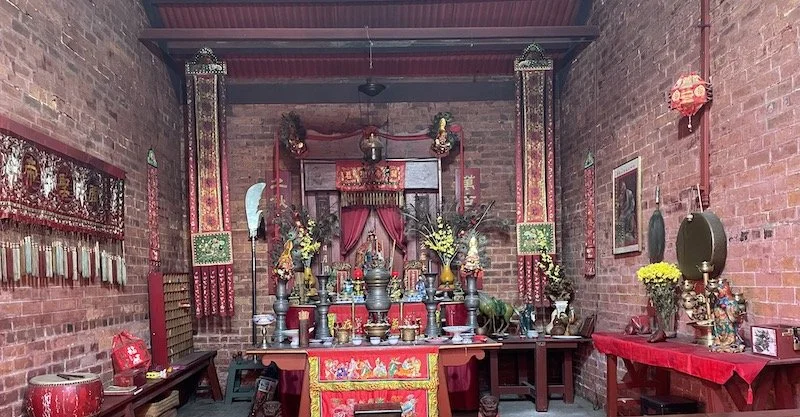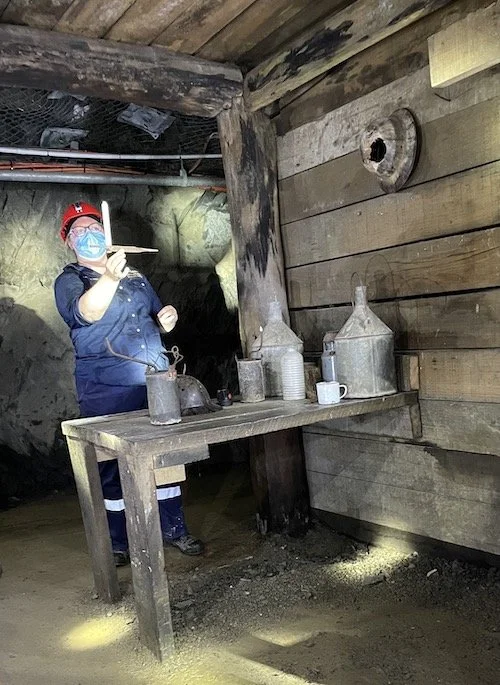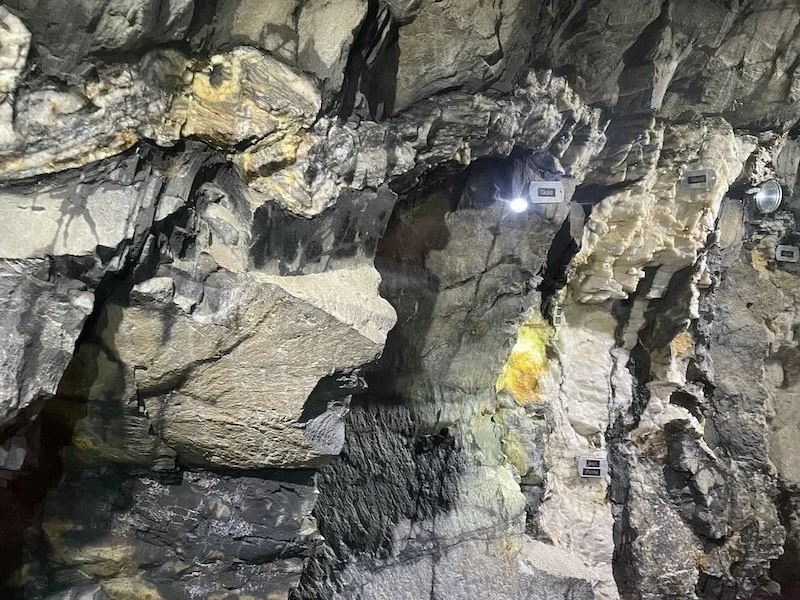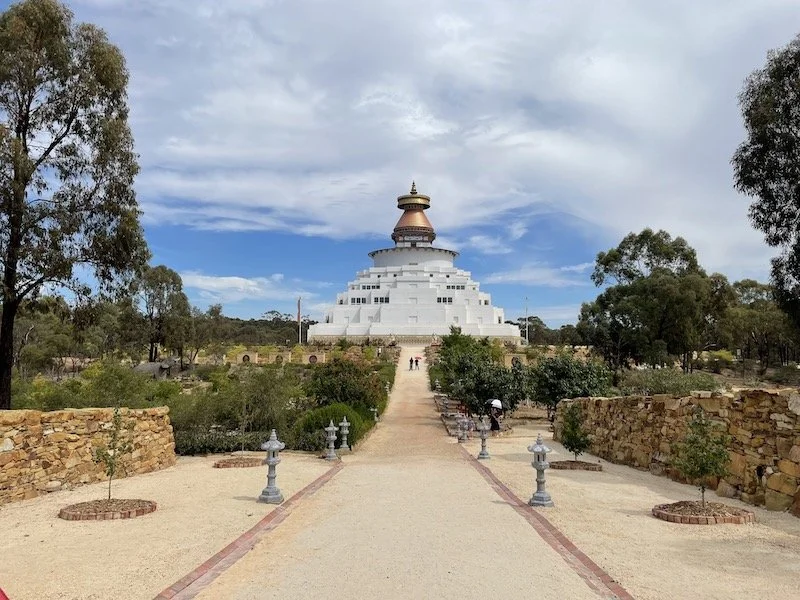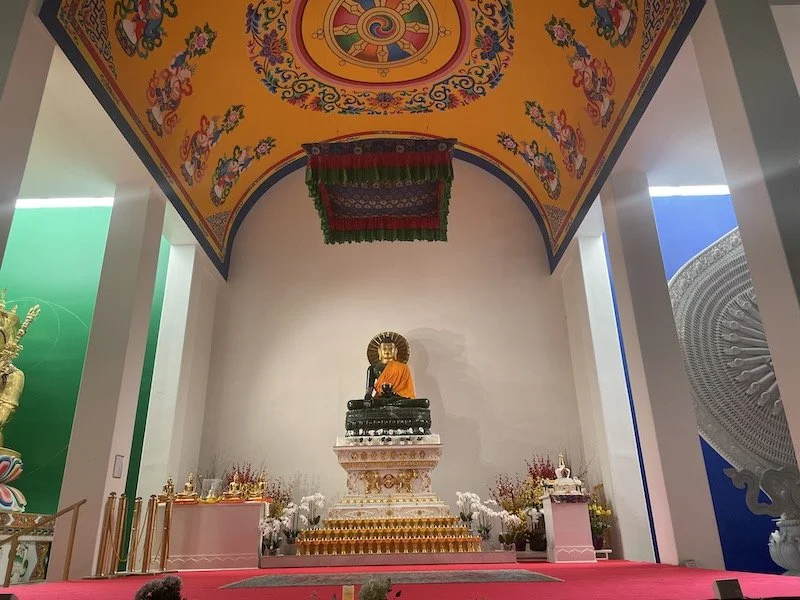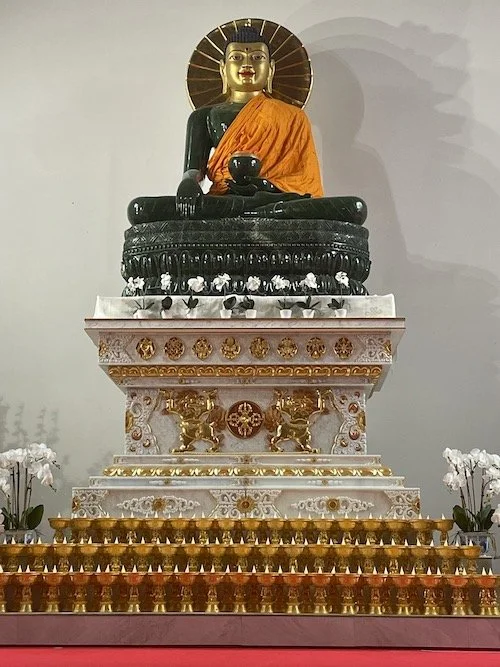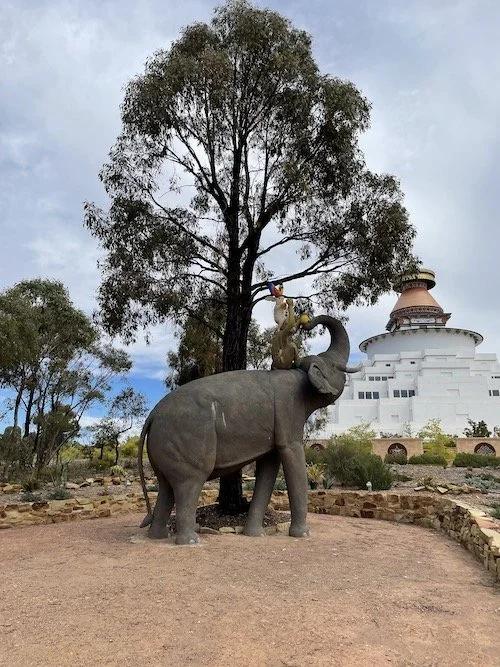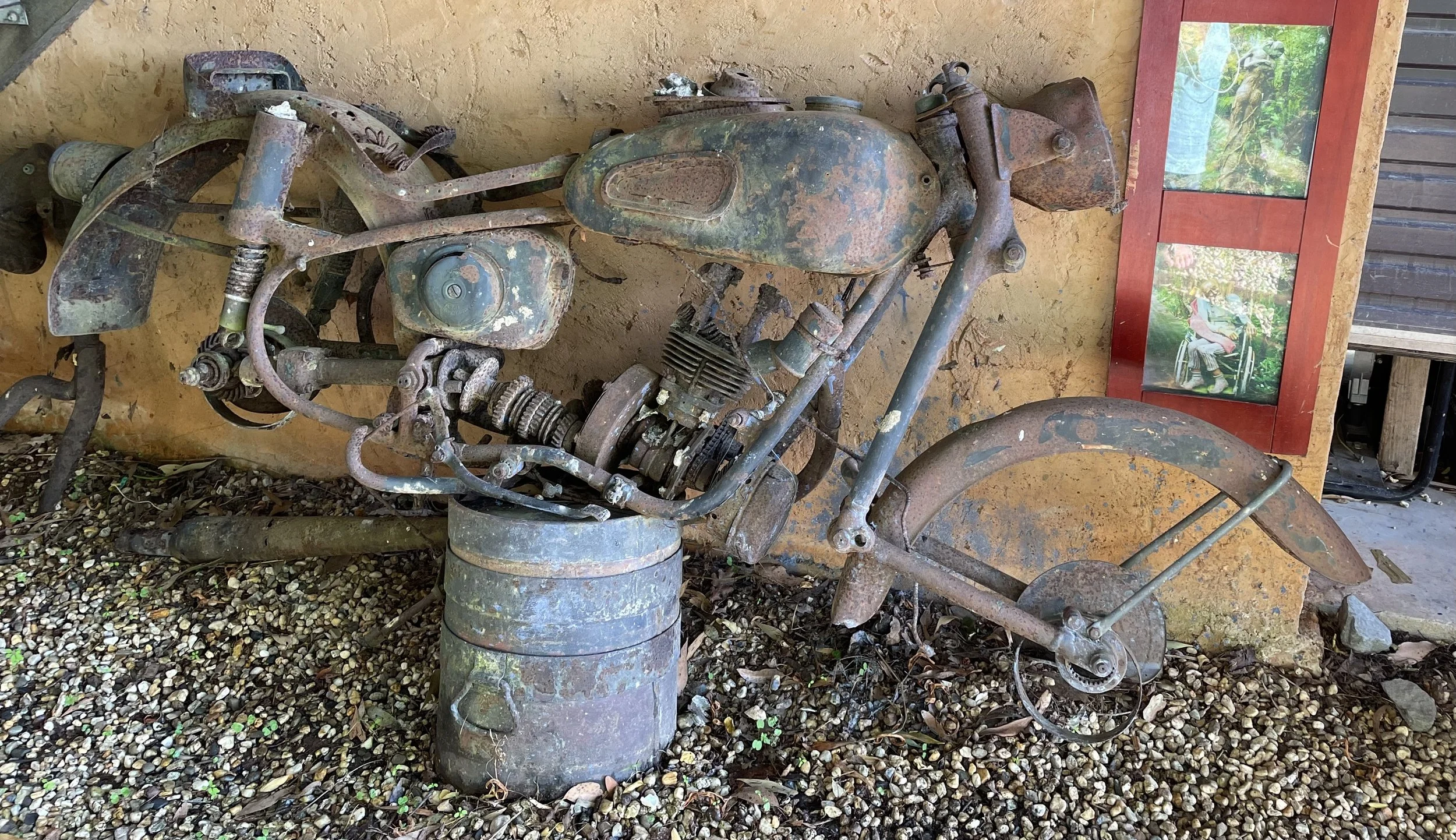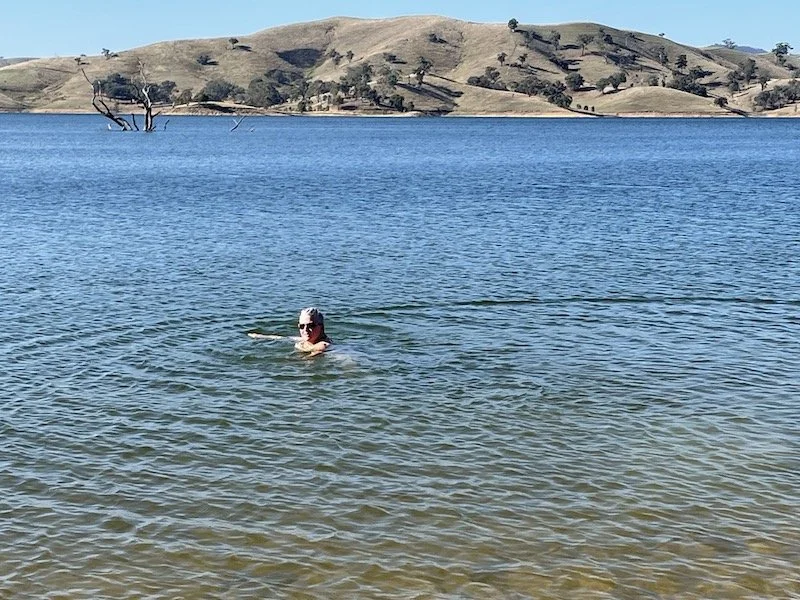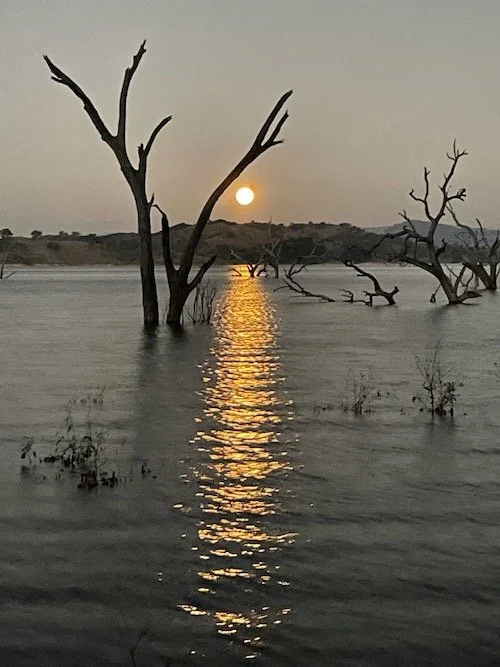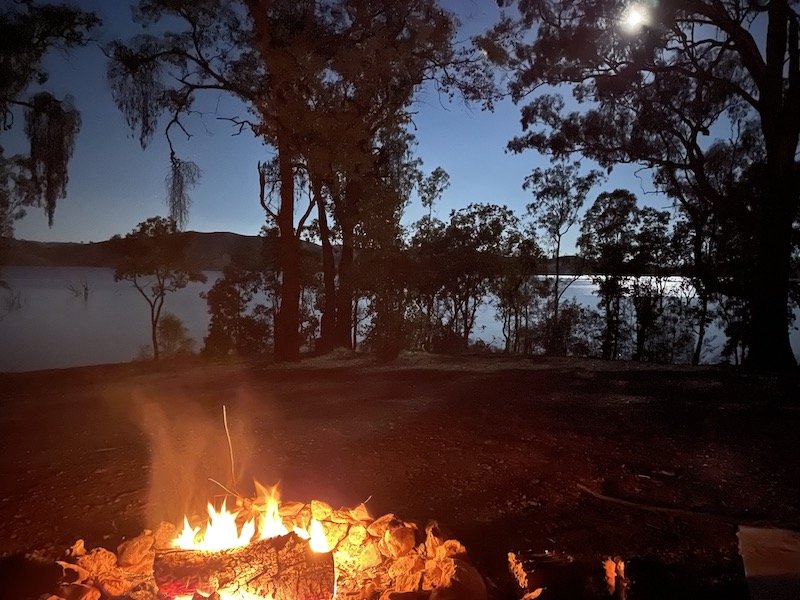Shakedown Troopy trip
Our first trip in the converted Troopy was a bit of a dash to Sydney to have the Thorburn’s rear bar with swing outs and the rear water tank fitted. Although we could have slept in the Troopy, we towed the Kimberley Karavan because a potential buyer was at the half way point. The chap, who was a farmer, had a good look but was keen for his wife to see it too so we agreed to call in again on the way back. It rained almost continuously for the duration of this short trip, including the night we stayed at Ian’s Auntie Lorraine’s. This downpour was the last straw for a tiny crack that appeared in one of the roof lights on the van and water dripped through all night and soaked the mattress. Perfect timing just as we were hoping to sell it. When we fessed up to the farmer and his wife, fully expecting him to be put off, he just shrugged and said ‘these things happen, it’s just like getting a puncture’. Clearly a practical bloke, he was happy to fit the new roof light we had on order and bought the Kimberley. We needed to wait overnight for the money transfer to clear so they offered the use of their guest suite for a shower and kitchen allowing us to decant all our stuff. We chose to sleep for the first time in the Troopy but had a lovely evening with them over dinner. They described their recent farming experience during several years of extreme drought where their sheep cost more to feed than they were worth to sell leading to distressing choices for many farmers.
There was no doubt we had to return to Melbourne as we had so much unnecessary stuff in the Troopy, it wasn’t useable but once we’d stored much of it at ‘Basecamp Brother’ we set off on our first proper shakedown trip around rural Victoria. We started at at a free bush camp where we were the only people for miles so could continue to fit things to the Troopy without disturbing anyone.
After updating my brothers on our whereabouts, I was reminded that my father had done his basic army training at the start of WWII nearby at Puckapunyal and thought it might be interesting to visit the Tank Museum there. We rolled up to the sentry gate, probably looking like we could storm the place, to be told that you have to get permission to enter 48 hours in advance as it was an active army base. He wouldn’t be talked round so we had to miss out on that particular bit of family history.
Next stop was Bendigo, a city built on land stolen from the Dja Dja Wurrung people, which became one of the worlds richest goldfields in the 1850s. Prospectors arrived from all over the world in the hope of making their fortune and, at the hight of the gold-fuelled prosperity, architects were given a free hand to design grand ostentatious buildings to display their wealth. Although the gold ran out within a century, most are still standing today and it’s possible to identify influences from many different countries.
We made this trip shortly before I had my hip replaced and I was only able to walk very short distances but we still did some really lovely tourist stuff starting with the historic tram ride. This is a great way to see this really interesting town with its grand streets and parks. It’s run largely by volunteers who, by popular demand, took on the service when the state wanted to decommission it. These folk provide an excellent commentary along the 30 minute journey from one end of the town to the other allowing tourists to hop on and off to visit places along the way.
We did the whole journey ending at the Chinese Joss House Temple, one of the last buildings of its kind in Australia and now considered of great architectural, historical and social importance. In the mid-1800s, a fifth of Bendigo’s population hailed from China. They came as miners and merchants, bringing their customs, culture and beliefs to the goldfields. This temple, one of seven constructed in the Bendigo area, opened in 1871 and was used as a place of worship until 1930s for the people of the Iron Bark Camp. There is very little left to see of the other original Chinese buildings and this too fell into disrepair after being abandoned by the declining Chinese mining population. The Commonwealth acquired the wider site in 1941, clearing the old camp site but sparing the temple when Sir John Jensen, Assistant Secretary for the Department of Supply, refused permission for its demolition. Thankfully, this beautiful piece of cultural history was restored allowing us to learn about it.
Chinese Joss House, Bendigo, Vic
The return tram took us all the way back to the Central Deborah Gold Mine where we took an underground tour down into the mine. At the end of 1851 there were 800 people living in Bendigo but the chance find of alluvial gold by a farmworker’s wife while she was was washing clothes in the creek changed that forever. By the following June 20,000 people had arrived in the town hoping to make their fortune. During the following four years the town became one of the richest producers of gold in the world, yielding over 700,000kg (which would be worth about A$65 billion in today's prices). The surface gold soon ran out so over 5,000 mines following the underground quartz reefs were sunk including many over 600m deep and Bendigo still has the largest number of deep gold shafts in the world. Although the rich seams have been exhausted, there’s still a bit of gold to be found if you’re patient but in the towns heyday in 1940s, kids found gold in every gutter after heavy rain!
To the north-west of Bendigo a vision of two Tibetan Buddhist Lamas is coming to fruition. Amongst the evolving Peace Gardens in the bush, the Great Stupa of Universal Compassion is being built. A stupa (sometimes known as a pagoda) is the most sacred building in Buddhism and symbolises the enlightened mind and the path to enlightenment. The shape, a cube with a dome on top is universal to all stupas and is based on instructions provided by the Buddha as he neared the end of his life when he folded his yellow robe over and over to make a cube then placed his upturned begging bowl on top. This stupa is 50m square at the base and 50m high, the design is based on the Gyantse Stupa in Tibet, considered the chief wonder in the Tibetan Buddhist world.
Great Stupa of Universal Compassion, Bendigo, Vic
The building is progressing slowly as funds become available but although there is clearly much work still to do, the building, surrounding gardens and the Gompa (temple) inside the stupa are breathtaking. The gompa contains huge statues of Buddhas and deities, some complete and others in the process of being constructed or decorated, the most notable being The Jade Buddha for Universal Peace. This is the largest Buddha carved from gemstone quality jade in the world. The Buddha has been carved from a rare boulder of translucent jade which was discovered in Canada in the year 2000. At 2.5 metres high and weighing four tonnes, it sits on an alabaster throne of close to 1.6 metres high and is considered to be priceless.
The Jade Buddha for Universal Peace
The Jade Buddha for Universal Peace
The Peace Park showcases symbols from many faiths including Catholic, Sikh, Islam, Hindu and Buddhism and the gardens contain iconic statues and illustrations of the Buddha’s teachings. A notable one is the statue of Quan Yin, who represents the compassionate aspect of the Buddha. This 7m statue was sculpted in Vietnam in poly-marble and hand painted at the stupa in Bendigo. Another is the representation of wonderful story of The Four Harmonious Friends that illustrates the benefits of working together and living in harmony.
Kwan Yin
Four harmonious friends - bird, rabbit, monkey and elephant
In the country town of Marysville we encountered sculptures of a different kind in Bruno’s Art and Sculpture Garden where there are over 170 life-sized sculptures set amongst lush gardens.
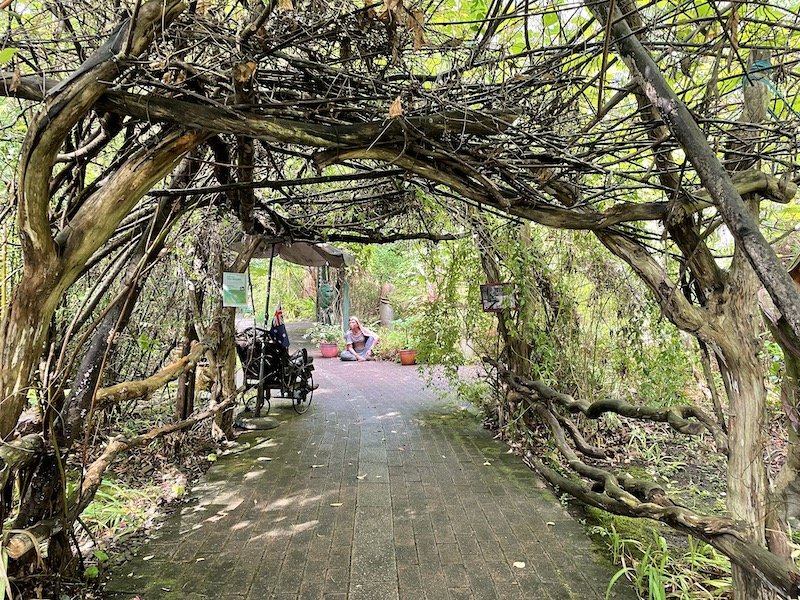
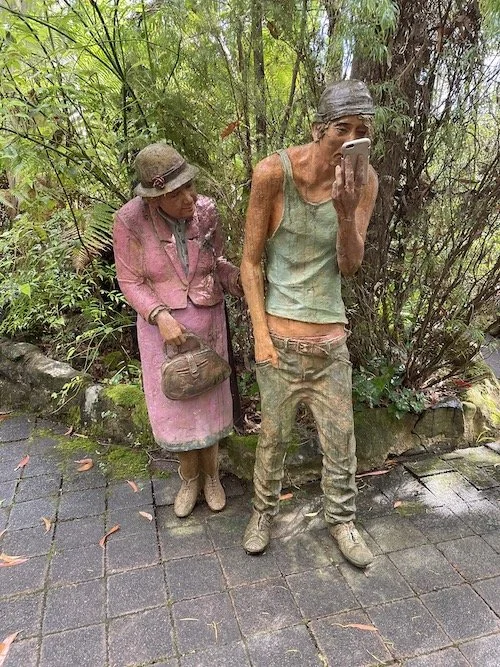
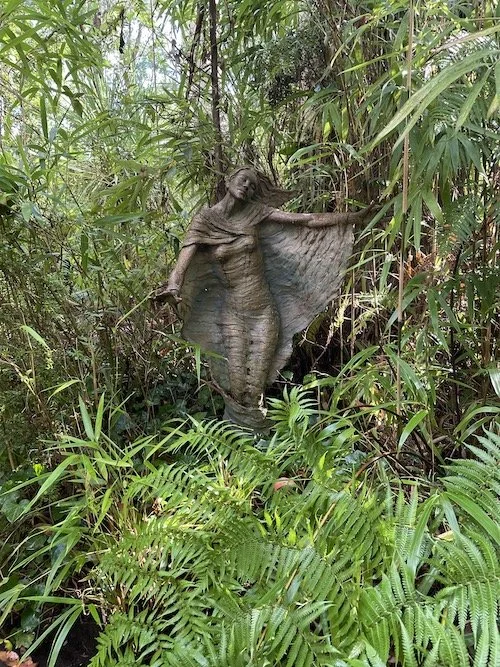
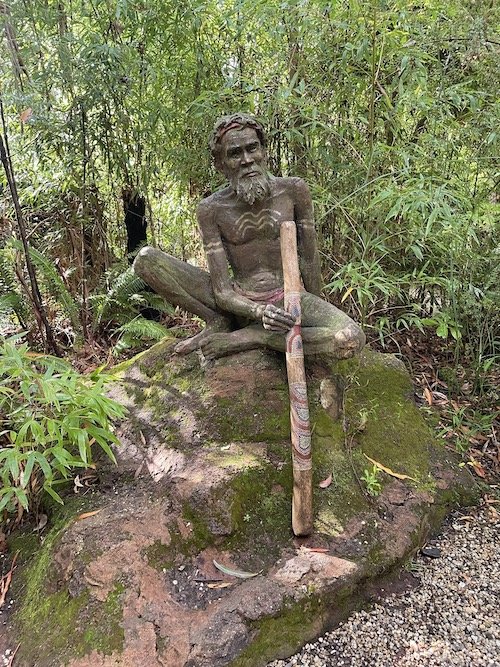
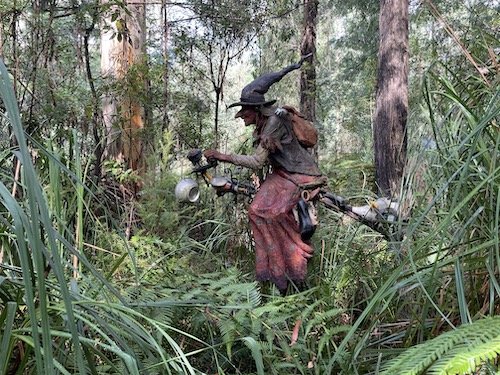
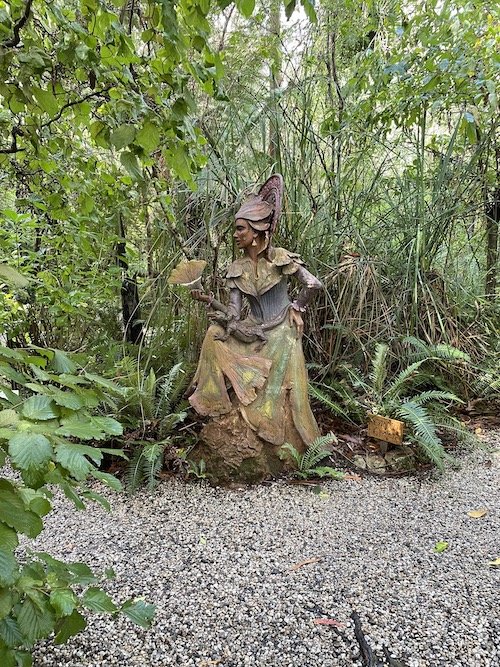
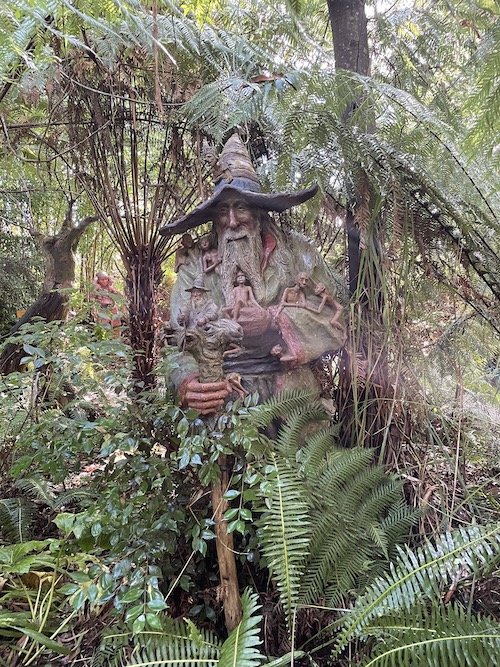
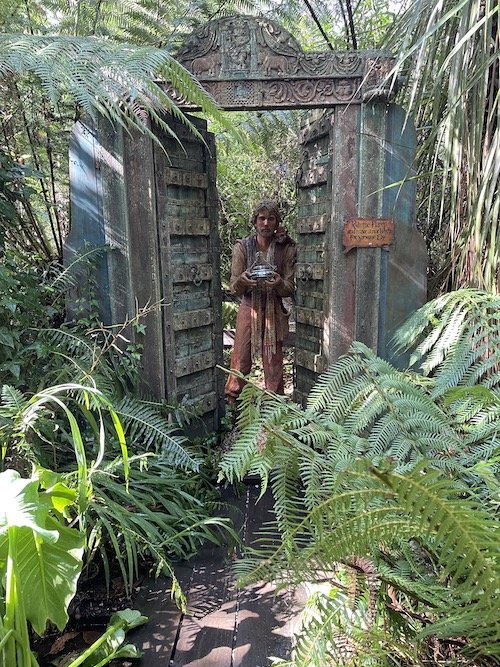
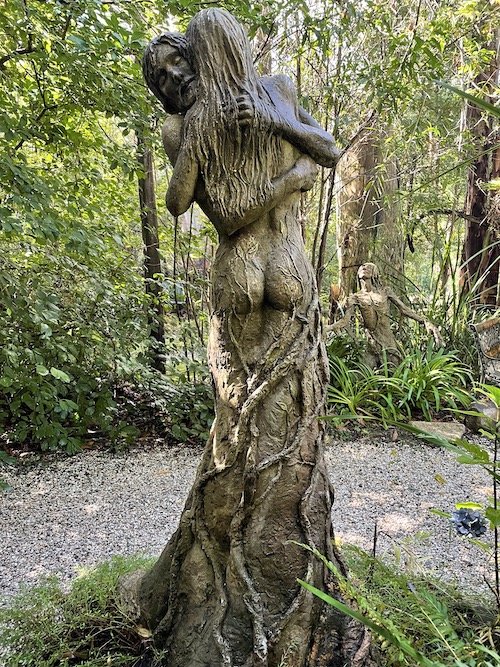
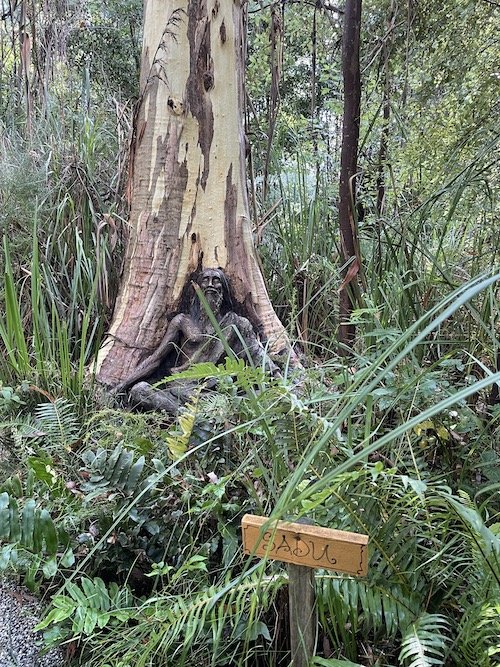
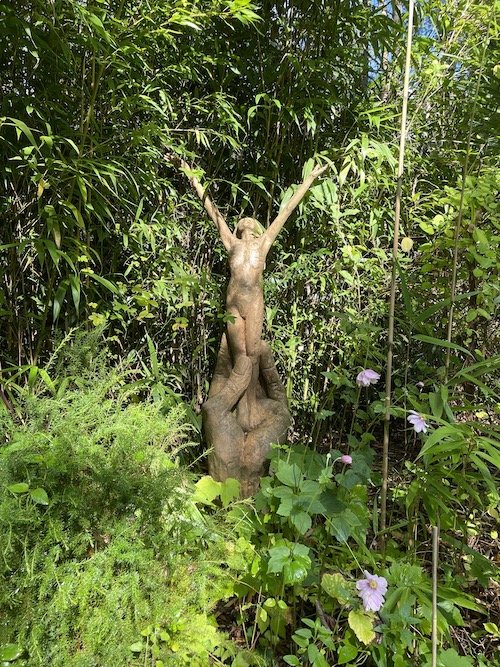
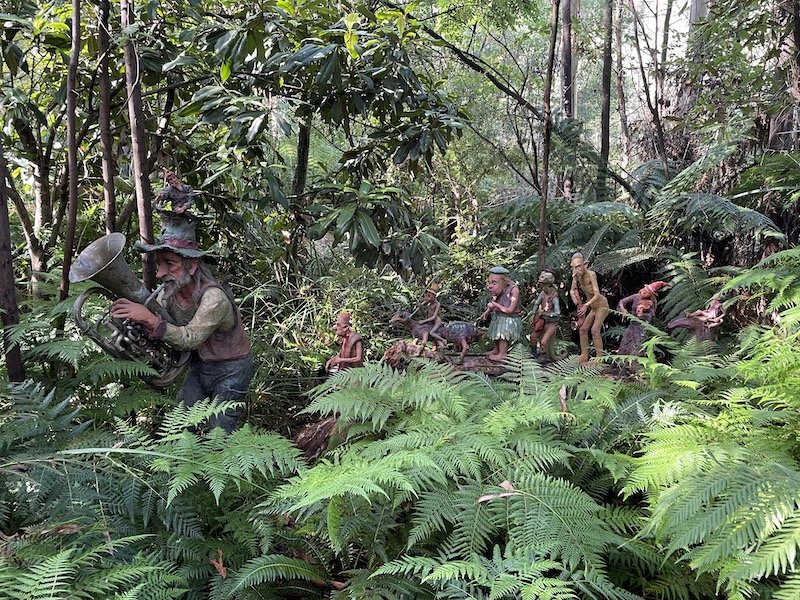
Although it’s barely possible to tell now, in February 2009, ferocious bush fires swept through this region of Victoria. Known as The Black Saturday fires, over 400 fires were recorded, affecting 78 communities. A total of 173 people died in the fires, and 2029 houses were lost. At 6.45 pm on 27th February, fire hit Marysville razing all but 14 properties to the ground. The fire continued to burn for 26 days and was finally declared under control on 13 March. In Marysville alone, there were 40 deaths, 73 people injured and 538 houses destroyed including Bruno’s garden. The only remaining evidence of Black Saturday in his garden is the photos next to some of the sculptures, the aftermath section of the website and a motorcycle of which, all that remains are the steel components.
The fire was so hot that even the aluminium engine casings evaporated exposing the inner workings of the gearbox.
Our last stop on this little trip was Lake Eildon National Park in the Central Highlands of Victoria where we camped beside Lake Eildon. This peaceful spot provided still waters to swim and enjoy the reflection of a beautiful full moon beside a camp fire.
The lake does not have a peaceful history though. It was artificially created by damming the Goulburn River to provide drinking water and irrigation to allow the cultivation of land stolen from the Taungurung people. The original dam was constructed in 1915 but as demand rose, it has been enlarged twice to increase the volume of water for hydroelectric power generation. The Taungurung people were killed or displaced by white settlers who wanted the land for agriculture and settlements and then when the valley was flooded, they also lost all their important cultural sites whereas the farmers were paid for the land lost underwater. This story of state sanctioned theft of land and genocide is repeated all over Australia. My sadness and shame is deep and pervasive. I find it impossible not to dwell on this every time I see the massive expanse of brown cultivated land and sprawling suburbs where once there was healthy land and peoples living together on it in reciprocity.
This is the last in the series of blog posts about our time ‘pausing in Victoria’ that were grouped more by topic than in chronological travelling order. The following posts will continue to follow our travels as they happen. Those of you that also follow our Instagram and FaceBook posts, or indeed talk to us in old school style, will know that I’ve got rather behind with blogging. I may or may not catch up before we return to the U.K., but that’s half the fun!
